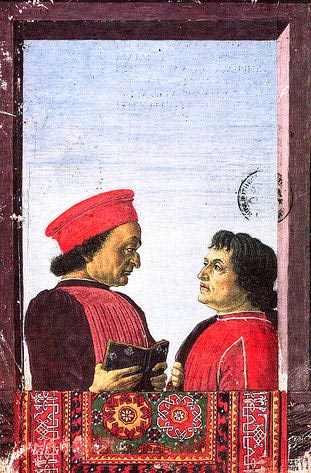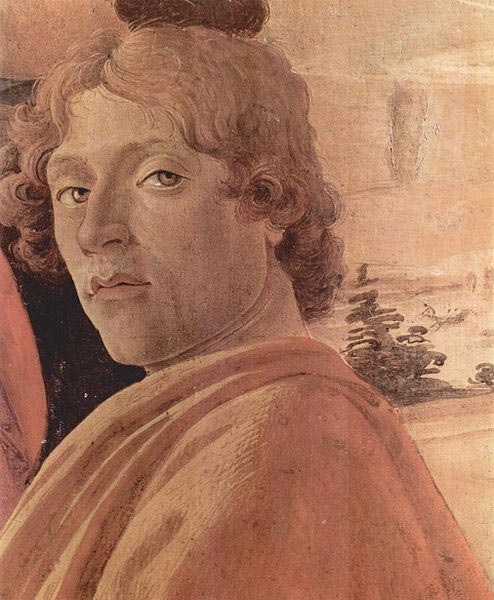One Renaissance artist and Florentine Painter never failed to impress the Medici Family. One of his noted artworks is none other than the famed “The Birth of Venus”, and has been a product of the Medici clan. He was none other than Sandro Botticelli (1445-1510).
Alessandro di Mariano di Vanni Filipepi, better known as Sandro Botticelli, was born at around circa 1445. He was an Italian Painter during the early period of the Renaissance at the Florentine School then supervised by Lorenzo de Medici. As a Florentine painter of the high and regal Medici Family, he was noted for having made paintings such as the “The Birth of Venus”, “Primavera”, and the “Adoration of The Magi”. He is known to be one of the earliest artists of the Renaissance.
Details and records of his life are vague and yet to be uncovered, but he was known to be an art apprentice at the age of fourteen, also giving an impression that he was able to undertake a more comprehensive art education that the rest of the Renaissance painters and sculptors. He was born a citizen of Florence, in a house by Borg ‘Ognissanti, in the Via Nueva. Botticelli is also said to be trained as a goldsmith by his older brother, Antonio.
By 1462, he became an apprentice to an artist named Fra Filippo Lippi, whose early artworks were credited due to his supervision. Due to the large influence a painting of Masaccio gave to the young Sandro, he learned from Filippo Lippi the concepts of warmer and proportional art. Recent discovery also shows that Botticelli could have participated in making a fresco with his master, in Hungary, whose order was from Vitez Janos, Hungarian Archbishop.
He was able to have his own art workshop by the year 1470. His works were seen as low relief, with drawings evident on outlines, and also having varying contrasts of light and shadow. His spotlight came when he revealed the Adoration of the Magi, whose painting portrays that of his own and also some of the Medici Family, Cosimo, his son and grandchild, Giuliano.
By the year 1481, prominent Florentine Artists, as well as painters from Umbria, including Botticelli himself, was commissioned by Pope Sixtus IV to make the walls of the Sistine Chapel frescoed, whose work then led to the papal supremacy. His works on the frescoes include Christ’s Temptations, The Rebels’ Punishment, and Moses’ Trial. Most of these works are still in the chapel.
His other artworks, the Primavera and Birth of Venus were assumed to have been painted for the sole purpose of Lorenzo de Medici’s villa at Castello. However, recent study shows that the Primavera has been commissioned for Medici’s townhouse, whereas the Birth of Venus was authorized by another individual whose information is still unknown.
The two artworks were also found to have some influence of realism based on Gothics, which was triggered by his close examination of antique objects and people. Though the means to paint were understood, what remain vague yet profound were the subjects of his said paintings. Up until now, the meanings of the two artworks still gather a lot of academic attention, but are only limited to the philosophy and poetry the artist wanted to convey. What gave them outstanding attention was that the paintings do not or illustrate texts, but each relied on various texts for a specific subject’s importance. His paintings were also said to have that profound grace and the essence of rhythm of lines.
By the middle years of 1480, he also worked with Domenico Ghirlandio, Filippino Lippi (son of Fra Filippo Lippi) and Perugino on Lorenzo de Medici’s fresco at his villa near the town of Volterra. He was able to paint a lot of frescoes among various Florentine churches. He also became part of a committee to conceptualize the façade of the Florence Cathedral.
 Botticelli’s latter life was influenced by Girolamo Savonarola, an Italian friar and Dominican scholar. Though it was not known as to what extent his belief in the friar influenced him, it was said that he nearly did not accomplish a single painting. He may have started though, but he eventually abandoned the work later. He then focused on making paintings of Mary, and also had influence that the said Dominican Monk preached about.
Botticelli’s latter life was influenced by Girolamo Savonarola, an Italian friar and Dominican scholar. Though it was not known as to what extent his belief in the friar influenced him, it was said that he nearly did not accomplish a single painting. He may have started though, but he eventually abandoned the work later. He then focused on making paintings of Mary, and also had influence that the said Dominican Monk preached about.
He died on May 17, 1510, with little employment and having been part of the committee overseeing the location of Michelangelo’s sculpture, David. Some of his artworks are as follows:
• Fortitude
• The Adoration of the Magi
• Saint Augustine
• The Madonna of the Magnificat
• Primavera
• The Birth of Venus
• Venus and Mars
• The Cestello Annunciation
• The Mystical Nativity
• Portrait of a Young Man
• Giovanna Degli Albizzi receiving gift of flowers from Venus
